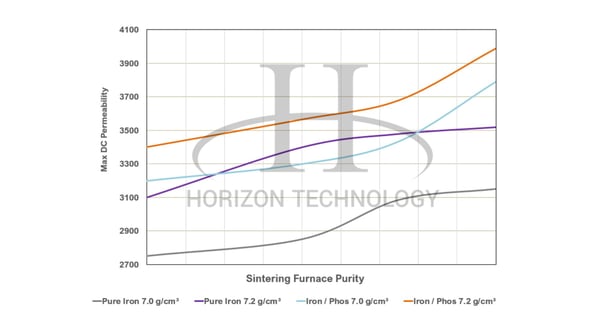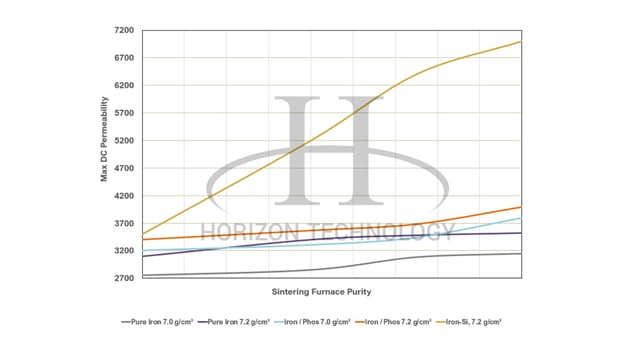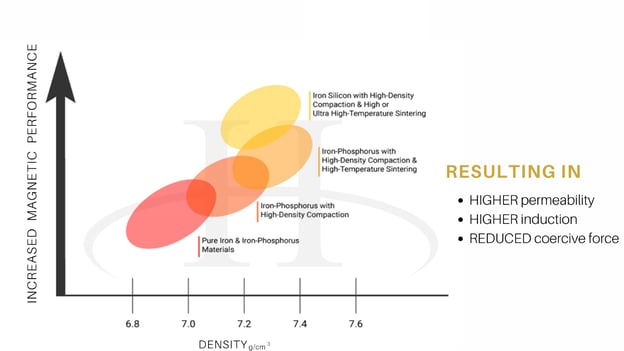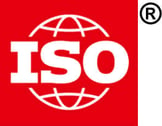Unlocking the Potential of DC Motors and Solenoids
Did you know that the average American vehicle is packed with more than 60 DC motors and solenoids? As we shift towards electric and hybrid powertrains, the count of these DC devices is on the rise. This shift is driven by the absence of internal combustion engines, which generate vacuum and run the serpentine belt-driven devices. Absent this, separate power sources are required to drive these auxiliary devices. This growing reliance on DC motors opens up exciting possibilities for harnessing the potential of powder metallurgy (PM) in the design of DC stators and solenoids. Powder metal (PM) technology offers a unique opportunity to create smaller and lighter designs while enhancing overall performance. Let's dive deeper into this intriguing connection between innovation and PM.
Diverse Material Alternatives in DC Magnetic Applications
Much like wrought magnetic steels, PM offers a range of material alternatives to meet both today and tomorrows DC magnetic performance demands. Added to this material freedom is the flexibility of density and processing, once again expanding the capabilities of PM to meet a broad variety of applications. Certainly, not to be overlooked is the inherent “green” attributes inherent with PM.
What do we mean by "density and processing alternatives"? To answer this question, let's explore Figure 1, which presents three material choices: pure iron, an iron/phosphorus alloy, both compacted to densities of 7.0 and 7.2 g/cm³, and an iron silicon PM material sintered to 7.2 g/cm³. In addition to considering various materials and densities, we also examined the influence of sintering atmosphere purity, with increasing purity moving from left to right on the spectrum. When we analyze the impact of density, alloying, and sintering atmosphere purity, a remarkable 300% enhancement is observed. This improvement ranges from pure iron at 7.0 g/cm³ with the lowest hydrogen level to iron/silicon at 7.2 g/cm³ in the highest purity atmosphere evaluated. A higher permeability translates to easier magnetization and demagnetization, which, in turn, reduces the current needed to induce magnetic flux and generate electro-mechanical forces. Let's delve deeper into the significance of these findings.

Figure 1 A represents the effect of alloying, part density and sintering atmosphere on maximum DC permeability.

Figure 1B compares iron, iron/phos and iron silicon materials
Now, let's take a closer look at the impact of sintering atmosphere, with all sintering processes conducted at a temperature of 2050 °F or 1120 °C. When it comes to enhancing material properties, increasing the concentration of hydrogen in the furnace atmosphere plays a significant role. For both pure iron and the iron/phosphorus alloy, this increase results in a roughly 15% improvement, while for iron silicon steel, the improvement is an impressive 100%. So, what does this mean for your design considerations?
Design Flexibility in DC Magnetic Applications
If you're primarily concerned with perm as your key criterion, you have the flexibility to experiment with various combinations of density, alloy, and sintering conditions to meet your design goals. It's worth noting that pure iron is not only a more cost-effective raw material but also less abrasive on compaction tooling compared to iron phosphorus or iron silicon materials. However, if you require a perm value exceeding 3500, your preferred solutions would be either the iron/phosphorus or iron/silicon materials. Once again, if cost is a crucial factor in your decision-making, then the iron/phosphorus option emerges as the top, if not the only, alternative among these two materials.
The design flexibility we've explored so far can be taken to the next level by considering a broader range of part densities, processing, and incorporating additional materials into the mix. These materials include iron-silicon steels, iron-nickel alloys, and magnetic stainless steels. It's important to note that the data depicted in Figure 1 was gathered using industry-standard sintering temperatures: 2050 °F for the iron and iron/phosphorous materials, and 2300 °F for the iron/silicon material.
Balancing Cost and Permeability
What sets Horizon Technology apart is our exceptional capabilities. We not only have the expertise to compact materials to even higher component densities but can also sinter them at temperatures in excess of 2450 °F. This unique capability enables us to achieve DC maximum permeabilities exceeding 7000. To provide a visual representation of the advantages brought about by these variables, take a look at Figure 2, which offers an illustration of the benefits we've just discussed.

Figure 2: DC magnetic performance incorporating materials, density, and sintering practice.
What can this level of performance bring to the table? Let's consider a practical example: the solenoid. Solenoids often require a rapid response with minimal applied current. Depending on the desired response time, you have the flexibility to fine-tune the choice of materials and processing methods to precisely meet your needs.
The Green Nature of Powder Metallurgy
Before we wrap up, it's essential to highlight the inherent green nature of PM. Powder metallurgy is an incredibly material-efficient process, often utilizing over 95% of the initial powder to create the final product. This high material efficiency results in significantly lower total energy consumption during PM component production, estimated to reduce energy consumption by around 15%. Additionally, the minimal waste generated translates to little to no need for machining - which eliminates machining chips and the logistical complexities of disposing of or returning chips to the steel mill for reprocessing. It's a clear win-win-win scenario.
Embracing the Future of DC Magnetic Components
Sintered soft magnetic processing provides unparalleled design flexibility for DC magnetic devices. Furthermore, PM serves as both a material and energy-saving technology, resulting in components that are more environmentally friendly.
To dive deeper into the world of sintered soft magnetic components, we invite you to explore our website for more information.


